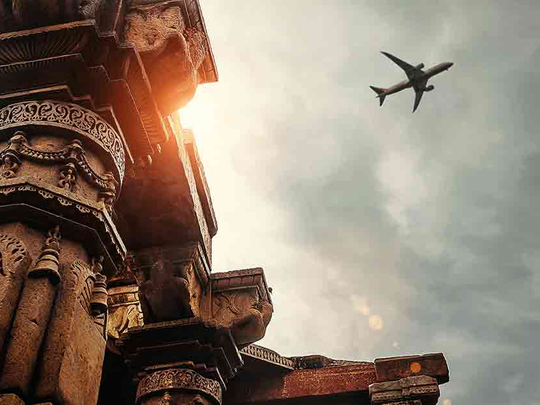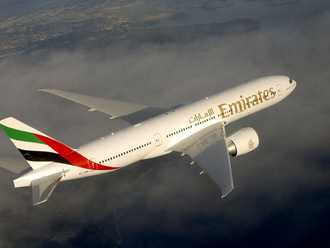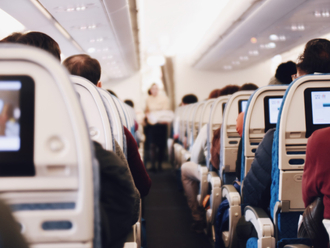
India’s aviation sector is on fire. June 2018 was the 46th-consecutive month when domestic traffic grew in double digits. Just when a slowdown was expected, thanks to the spike in crude oil prices, rupee depreciation and congested airports, domestic traffic in the first half of 2018 grew by a whopping 22 per cent, against a world average of 7-8 per cent.
India ranked a lowly tenth around 2010. It has jumped six places since then and may be in the top three by the end of 2018 along with the US and China. The Indian aviation industry aspires to become the top aviation market by 2030. It may sound ridiculous to some, but India has the ability to surprise the world every now and then.
Untapped potential
Barely 1 per cent of Indians fly, despite a 350-million-strong middle class. If each of them takes a return flight just once a year, we are looking at 700 million trips, bringing India very close to China.
India is a 5,000-year-old civilisation, with holy places of every major religion of the world. It is blessed with tremendous natural and cultural diversity. It has a 7,000km coastline and more than 1,200 islands.
Yet, foreign tourist arrivals in India are quite low compared to China, Malaysia and Thailand. India is working hard on its brand-building, infrastructure, visa issuance and tourist safety.
In 2016, India released its first-ever National Civil Aviation Policy (NCAP). Until then, barely 75 of its airports had commercial traffic. NCAP brought out a regional connectivity scheme called Udan, allowing passengers to fly to unserved airports for as little as $36 (about Dh132) for a one-hour flight. The scheme has been a great success with airlines bidding to connect 56 new airports and 31 new heliports.
The government is now working on a new version of Udan for specific tourist locations and international routes.
The Nabh Nirman initiative aims to expand airport capacity by more than five times to handle a billion trips a year. New airports at Delhi, Mumbai, Mopa, Vizag, Pune and Patna are likely to come up in the next three-to-four years. About 20 major cities are likely to go in for a second airport a la Delhi and Mumbai. Existing airports are undergoing capacity augmentation.
Airport projects in India require an investment of more than $30 billion. The government is working on a new Model Concession Agreement that will help airport investors earn good returns while providing efficient infrastructure at optimal costs.
After the liberalisation of foreign investment rules, global investors are free to
have a 49 per cent share in Indian carriers and 100 per cent stake in Indian airports. This opens up interesting opportunities for Gulf carriers, airport companies and investment funds.
India has launched a satellite-based navigation system, called the GPS-Aided Geo-Augmented Navigation (Gagan). Only three others — the US, EU and Japan — have this capability. All new aircraft being registered in India from January 1, 2019 shall be Gagan-compliant. Gagan will enhance India’s air-traffic capacity, flight safety and cost-efficiency.
Challenges abound
However, India has no dearth of challenges. Land acquisition for airports is a complicated process. India’s potential in air cargo, maintenance, repair and overhaul (MRO), helicopters, seaplanes and general aviation remains untapped. Availability of skilled manpower is inadequate.
Other reforms such as the formation of an independent civil aviation authority, corporatisation of Air Navigation Services and public listing of Airports Authority of India are still pending.
The recent bids for privatisation of Air India and helicopter company Pawan Hans drew a blank. So did the bid for selection of private operators for Jaipur and Ahmedabad airports, despite all these assets having high intrinsic value. The bid conditions are expected to be made more liberal and investor-friendly.
The price of jet fuel in July increased by 45 per cent over the past 12 months. The government is considering bringing aviation turbine fuel under GST, which may provide welcome relief.
India’s utilisation of its bilateral quota in the Gulf and Asean has been low. The traffic from India to the lucrative US and EU markets has been diverted to these hubs due to their strong national carriers. Most Indian carriers are now planning on expanding their international footprint.
Once they utilise the Indian quota to a reasonable level, the overall bilateral quotas are likely to increase.
Indian aviation is currently in a sweet spot. It has the potential to become the third-largest market by the end of 2018 thanks to a growing economy, strong middle class, rising tourist traffic and a supportive policy environment.
This provides a great opportunity for Indo-Gulf collaboration in areas such
as airlines, airports, cargo, MRO, general aviation, aerospace manufacturing and skill-building.
It is a win-win proposition waiting to be tapped.
— The writer is Partner and India Head of Aerospace and Defence at global consultancy KPMG. With input from Jodhbir Singh Sachdeva, Associate Director, Aerospace and Defence at KPMG in India. Views expressed here are of the authors









